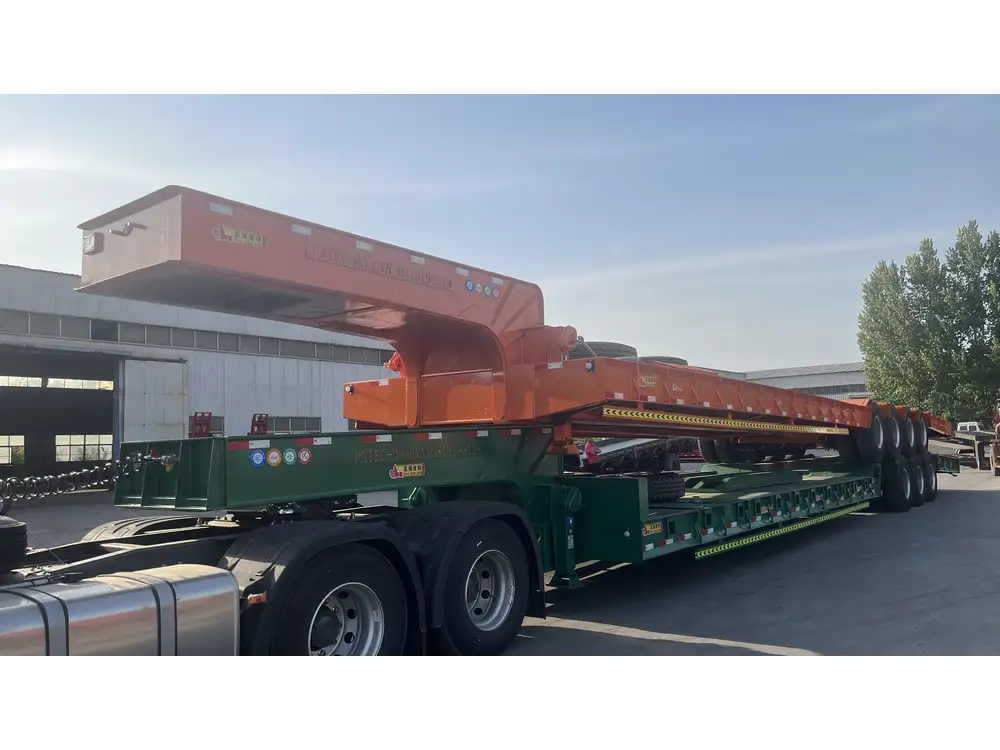Building a semi-trailer involves a meticulous blend of planning, engineering, and execution. In the competitive landscape of freight transport, having the right semi-trailer can significantly enhance efficiency, safety, and cost-effectiveness. In this article, we will explore the intricate processes involved in semi-trailer construction, examining materials, designs, regulatory considerations, and practical steps.
Understanding Semi-Trailer Components
| Before delving into the building process, it’s crucial to understand the fundamental components of a semi-trailer: | Component | Description |
|---|---|---|
| Chassis | The frame that supports the trailer’s structure. | |
| Axles | Spindles around which the wheels rotate, crucial for load distribution. | |
| Suspension | Components designed to absorb shocks and maintain stability. | |
| Kingpin | The connector that attaches the semi-trailer to the tractor unit. | |
| Flooring | The surface that supports cargo, which can vary in materials from wood to metal. | |
| Walls and Roof | These enclose the trailer and can be designed for specific cargo types. | |
| Lighting and Electrical Systems | Essential for safety and communication with other road users. |
Phase 1: Planning Your Semi-Trailer Design
Planning is the cornerstone of every successful build. Here are the key considerations:

Define the Purpose and Type
- Determine Cargo Requirements: Will you transport perishable goods, bulk items, or heavy machinery? Your design hinges on cargo specifications.
- Select Trailer Type: Options include flatbeds, refrigerated trailers, dry vans, or specialty trailers.
Regulatory Compliance and Standards
Ensure compliance with industry regulations. This includes:
- Federal Motor Carrier Safety Administration (FMCSA) regulations.
- International standards if exporting.
- Local weight limits and road restrictions.
Design Engineering Process
- Create CAD Models: Use Computer-Aided Design software to visualize your trailer.
- Structural Simulations: Conduct stress tests to ensure durability and safety.

Phase 2: Material Selection
| The choice of materials directly impacts your trailer’s resilience and weight. | Material | Pros | Cons |
|---|---|---|---|
| Steel | Strong and durable, widely available. | Heavy, can rust if not treated properly. | |
| Aluminum | Lightweight and resistant to corrosion. | Expensive, less durable than steel. | |
| Composite | Lightweight, often with good insulating properties. | May have higher manufacturing costs. |
Preparing Material Specifications
- Gauge Steel Requirements: Depending on the load and intended use, select the appropriate thickness.
- Corrosion Protection: Consider galvanization or powder coating for metal surfaces.
Phase 3: Fabrication Process

Chassis Construction and Assembly
The chassis is the backbone of your semi-trailer. Begin with:
- Fabrication of Steel Framework: Cut steel beams to fit the designed specifications.
- Welding: Use advanced welding techniques to ensure strong, durable joints.
- Assembly of Cross Members: Reinforce the frame by adding cross members which help distribute weight.
Axles and Suspension Installation
- Select Axle Type: Choose between standard, heavy-duty, or custom axles based on trailer use.
- Install Suspension System: Depending on the axle, attach the suspension components, ensuring they align correctly to minimize wear during operation.
Flooring Installation
- Material Choices: Options include plywood, steel, or aluminum.
- Secure Installation: Mount flooring securely to the chassis, paying close attention to load distribution points.

Phase 4: Walls and Roof
Wall Assembly
- Material Selection: Choose walls based on cargo requirements (e.g., insulation for refrigerated trailers).
- Moisture and Weather Resistance: Apply appropriate coatings or treatments to enhance durability.
Roof Installation
- Structural Integrity: Ensure the roof design supports potential loads from stacking.
- Installation Method: Secure the roof panels using rivets or welding to maintain a strong hold.

Phase 5: Electrical Systems and Safety Features
Wiring and Light Installation
- Electrical Wiring: Use durable wiring capable of withstanding environmental conditions.
- Lighting Systems: Install LED lights for visibility; maintain compliance with regulations on lighting.
Safety Features
| Feature | Purpose |
|---|---|
| Reflectors | Enhance visibility, particularly in low-light conditions. |
| Braking System | Ensure efficient and safe stopping capabilities. |
| Mud Flaps | Protect trailing vehicles from debris. |

Phase 6: Quality Assurance
Before putting your semi-trailer into operation, perform the following checks:
Functional Testing
- Weight Test: Load the trailer to capacity and ensure stability under load.
- Braking System Test: Verify that the braking system functions correctly and effectively.
Regulatory Inspection
Ensure the trailer meets all regulatory standards before it hits the road. This may involve state inspections or certifications from approved bodies.

Phase 7: Post-Production Considerations
Maintenance Protocols
Establish a routine maintenance schedule:
- Regular Inspections: Look for wear and tear, especially on axles and the braking system.
- Lubrication: Schedule regular lubrication for moving parts to prevent excessive wear.
Customization Options
Consider offering trailer customizations:
- Adjustable Features: Create options for adjustable heights or length.
- Color and Branding: Allow clients to personalize their semi-trailer with custom designs.

Environmental Considerations
Adopt eco-friendly manufacturing practices:
- Recyclable Materials: Utilize materials that can be recycled and reduce waste.
- Sustainable Practices: Engage in energy-efficient production techniques.
Conclusion
Building a semi-trailer requires extensive planning, a deep understanding of engineering principles, and adherence to safety and regulatory standards. By following the phases outlined in this guide, manufacturers can construct high-quality, durable semi-trailers suited for diverse cargo needs. Focusing on detail, from the selection of materials to after-production maintenance, ensures longevity and reliability, establishing a reputable brand in the market.
Your commitment to excellence in semi-trailer production can ultimately lead to superior customer satisfaction and a robust position in the transportation industry. Whether you are a seasoned manufacturer or entering the market, these guidelines pave the way for successful semi-trailer construction that not only meets but exceeds industry standards.



